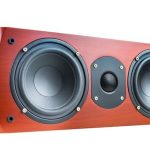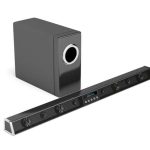Many people get stuck trying to figure out what’s best for their home sound system or car. But it is often a matter of what sound frequency you like and your needs, is it that of a bass tube or subwoofer?
Watching movies or listening to music without the perfect system leaves much to desire. The right system will make you feel the soundtracks and nod to the bit.
And this is what most people resonate with—the booming but clear rhythmic and harmonic sound, perfect for entertainment.
As you plan to purchase a sound system, you have the option to settle on bass tubes or subwoofer.
So, bass tube vs. subwoofer, which is better? Let’s find out.
What is a Bass Tube?
Before you see what’s best, you need to know the bass tube.
Bass tubes are cone shaped high-power amplifiers with an enhanced bass sound. While bass tube come in variant brands, some employ RMS power with a frequency range of 42Hz-20KHz.
Bass tubes are made of woofer, woofer net, bass tube circuit and bass tube cabinet.
Qualities of a Good Bass Tube
Bass tubes are variant. Below is a list of elements of a good bass tube:
Power Capability
Bass tubes with peak power and RMS power are worth your money. The high-power range is the peak power, while RMS is the continuous output frequency. And this power capacity is what makes a good bass tube, as poor power abilities affect the bass frequency.
Frequency Reaction
Like the subwoofers, the frequency range matter a lot. A perfect bass tube choice should respond to low frequencies for high bass. Also, a more comprehensive response range of frequency is vital. Comprehensive frequency ranges offer better deepness and excellent performance. You’ll like the sound mix.
Mounting and Connection
Now, you’re ready to spend on this bass tube but are you sure it will fit in your car or the room you set aside? Bass tube with straps to mount makes work easier, pick a bass tube that can be easily mounted and connected.
What is a Subwoofer?
Are you all about quality bass? Subwoofers are perfect for this, they produce low frequencies that range between 20-200Hz.
Subwoofers are either front-firing or down-firing speakers. And have a one-facing direction driver.
But what does this mean? Front-firing means the subwoofer has sound coming from the unit side. On the other hand, down-firing entails sound directed from the bottom of the subwoofer.
The subwoofer is used in conjunction with an existing set of speakers. It provides more power than you would get from just the speakers alone meaning, you get better sound quality and more volume and bass response than you could get from just using the speakers themselves.
Qualities of a Good Subwoofer
So far, you may want to settle on a subwoofer for your sound needs. But to say that all subwoofers are excellent is a lie. Why? There are specific qualities of a subwoofer you should check.
Here’s a summary of the best.
How Fast Does the Subwoofer Transition?
Does the subwoofer have speed in stopping or starting? A good subwoofer should be fast in changing momentum. A precise balance in sound where the bass stops and sends a clear message to the speakers makes the sound good.
High Volume with Low Frequency.
Do you know that the threshold of human hearing is 20Hz to 20,000Hz? Well, that’s when you hear clearly. So, when getting a subwoofer, you may want to consider how deep is the bass or tone. The lower the frequency, the most bass you’ll get.
Blend with a Range of speakers
A good subwoofer needs to produce sound in sync with your other speakers. Quality subwoofers can set the balance—where one doesn’t hear the bass more. For instance, you shouldn’t know a subwoofers location in a room by the bass it produces. Instead, good subwoofers should have sound notes that complement each other.
The Frequency Response Needs to Be Accurate
Does the subwoofer produce quality, clear sound without warping and flattening? Consider a sub-woofer that makes the bass you want at a pitch that matches it. Its accuracy in frequency response is incorrect if it cannot perfectly replicate the original soundtracks. It’s worth considering if the sound is loud and clear as it should from source.
Bass Tube vs. Subwoofer, which is Better?
Well, this is a tricky one. But ask yourself this:
- Subwoofer box vs. bass tube are all perfect choices, however what are my needs—is it for the home theater or the car? While one may want to boost their home theater, another may want a sound system for their car. A bass tube design helps your car’s speakers produce more bass and volume without hurting the overall quality of your music.
- Are you planning to use the sound system with other speakers or not? Subwoofers give you a much better low end than bass tubes when used with an entire range of speaker systems. Therefore, a subwoofer is the best fit if you want to work with other speakers.
- Moreover, speaker placement is crucial as you resolve to either of the two, bass tube vs. subwoofer—ensure you have the space to accommodate your choice. Since subwoofers can fit in cars, you’ll need a subwoofer box to get the sound system covered and safe. Therefore, know what clicks with you.
- The budget room is another aspect. While you may want a subwoofer or bass tube, does your budget allow? Truthfully, the prices of the two speakers range widely based on brands, some may be affordable as others pricey. Pick what best fits your budget.
In Summary
The bass tube and the subwoofer are two of the most common types of speaker systems in home stereo systems and cars. While they have some differences, they offer good sound quality at a reasonable price. You can settle on the best from this read, but if stuck, always consult with the sound experts.
Michael Evanchuk is a San Francisco-based sound engineer with 20 years’ experience installing, troubleshooting, and repairing commercial, automotive, and household sound equipment. Evanchuk owns an auto stereo center, where he offers highly competitive car audio installation and repair services. He has written dozens of articles on different sound engineering topics, all of which have been published in leading journals, blogs, and websites.





